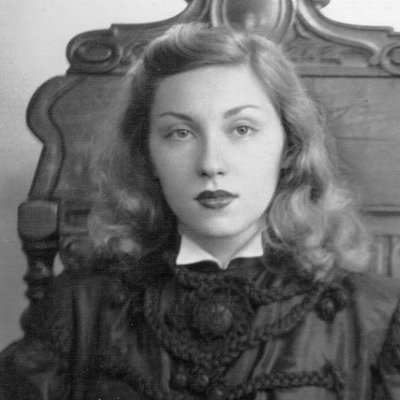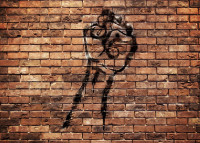“I want the following word: splendour, splendour is fruit in all its succulence, fruit without sadness. I want vast distances. My savage intuition of myself.”
– Clarice Lispector
WHEN New Directions began publishing new translations of works by the Brazilian writer Clarice Lispector in 2011, it heralded a momentous rediscovery for English-language readers of one of the greatest modernist writers of the 20th century.
I remember vividly my first encounter with Clarice Lispector, through four remarkable translations published by New Directions: 'Near to the Wild Heart', 'Água Viva', 'The Passion According to G.H.' and 'A Breath of Life'. The quartet of books featured striking covers in autumnal shades of amber and vermillion that form a portrait of the author when put together. The strange beauty of that portrait was mesmerising, one could almost sense the storms of thought and language gathering behind young Clarice’s hypnotic gaze.
Then, the peculiar yet poetic opening lines of Lispector’s first book (and the first book by her that I read), 'Near to the Wild Heart':
“Her father’s typewriter went clack-clack… clack-clack-clack … The clock awoke in dustless tin-dlen. The silence dragged out zzzzzz. What did the wardrobe say? clothes-clothes-clothes. No, no. Amidst the clock, the typewriter and the silence there was an ear listening, large, pink and dead. The three sounds were connected by the daylight and the squeaking of the tree’s little leaves rubbing against one another radiant.”*
When I read these lines, I felt as if Lispector had been a scribe seated in a hidden corner of my childhood, silently observing and chronicling my private thoughts and experiences. My earliest memories are steeped in the sound of my father’s typewriter and the changing light that permeated our shifting family home, from Cambridge and Brighton to Bangkok and, finally, Kuala Lumpur.
Lispector was 23 years old when 'Perto do Coração Selvagem' (Near to the Wild Heart) was published in 1943. It won the prestigious Graça Aranha Prize for best debut novel the following year. Lispector became a sensation in Brazil’s literary circles, celebrated for her bold modernist prose. The esteemed literary critic Sérgio Milliet wrote of her: "Clarice Lispector's work appears in our literary world as the most serious attempt at the introspective novel. For the first time, a Brazilian author goes beyond simple approximation in this almost virgin field of our literature; for the first time, an author penetrates the depths of the psychological complexity of the modern soul."
Lispector’s stream-of-consciousness meanderings and experimental language have earned her comparisons to modernists greats such as James Joyce and Virginia Woolf. Some have proclaimed her to be “the most important Jewish writer since Kafka.” Her stunning appearance, too, became the stuff of legends. One of Lispector’s translators, Gregory Rabassa, described her as “that rare person who looked like Marlene Dietrich and wrote like Virginia Woolf”.
Lispector had deliberately made palpable her connection to the pantheon of literary modernists. She had even borrowed the title of her first book from a line from Joyce’s 'Portrait of the Artist as a Young Man': “He was unheeded, happy and near to the wild heart of life”. Yet while comparisons to figures such as Joyce, Woolf and Dietrich reveal the reverence and idolisation that Lispector inspires, it tends to eclipse the singularity of Lispector’s literary genius.
Interlaced with philosophical ruminations and visionary existential flights, Lispector’s interior monologues are rooted in the earth and the body. The dizzying paths of her thought circumambulate always around a core of raw sensuality. Lispector’s language unearths a savage splendour which speaks of “the dark eroticism of abundant life”, approaching, at times, the breathlessness of orgasm, and at times, the rapture of the religious mystic. This is particularly evident in one of her last books, 'Água Viva', published in 1973, three decades after 'Near to the Wild Heart'.
“As if ripping from the depths of the earth the knotted roots of a rare tree, that's how I write to you, and those roots as if they were powerful tentacles like voluminous naked bodies of strong women entwined by serpents and by carnal desires for fulfillment, and all this is the prayer of a black mass, and a creeping plea for amen: because the bad is unprotected and needs the approval of God: that is creation.”**
In her late work, Lispector’s already tenuous concern with plot disappears altogether. Her writing is categorised as "fiction", yet it overturns orthodox notions of narrative prose. The exuberance of her early work gives way to a language relentlessly in search of itself through excavations of waking reality and the subconscious. In 'Água Viva', the premise of a narrator – a painter who is writing a letter to a lover – does little to disguise that the work is also Lispector’s intimate letter to her reader. We feel that Lispector is whispering to us, as if sharing a secret in the dark.
Lispector’s inimitable language had perhaps been shaped, among other things, by the displacement and unbelonging of her early life. Clarice Lispector was born Chaya Pinkhasovna Lispector in the shtetl of Chechelnyk in Ukraine, in the ruins of the Russian Empire, on December 10, 1920. Her family was uprooted by antisemitic pogroms during the blood-soaked Russian Civil War that ensued after the Bolshevik Revolution of 1917. Fleeing the Ukraine for Romania, the family then emigrated in 1922 to the town of Recife in Brazil, where relatives had already settled. Upon arrival in Brazil, they changed their names to better assimilate in their new land, and so little Chaya became ‘Clarice’. Clarice’s mother died when she was nine, and the family later moved to Rio de Janeiro.
Like other 20th century Jewish émigré writers such as Nelly Sachs and Paul Celan, Lispector struggled with the fragmented world and Self through language, and ultimately found her home there. Although Lispector seldom wrote explicitly about her early life or her Jewish heritage, her writing is imbued with the urgency and unappeased longing of dislocation: “I write as if to save somebody’s life. Probably my own,” she once wrote. “Life is a kind of madness that death makes. Long live the dead because we live in them.” – The Vibes, December 12, 2020
*Near to the Wild Heart, translated from the Portuguese by Alison Etrekin, New Directions Publishing, 2012.
**Água Viva, translated from the Portuguese by Stefan Tobler, New Directions Publishing, 2012.




















